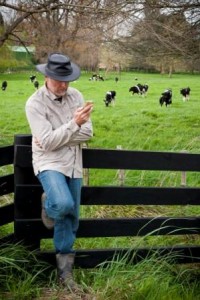Craig Hickson,Progressive Meats’ managing director and 2012 Federated Farmers AgriBusiness Person of the Year, has been profiled again, this time at Idealog in an article which originally appeared in Primary Magazine. Read more ….
Monthly Archives: October 2012
Take the Cafe Challenge – Beef + Lamb New Zealand
Take the rural message to town. Join B+LNZ Ltd’s Cafe Challenge.
Rennie wins first beef and sheep news award
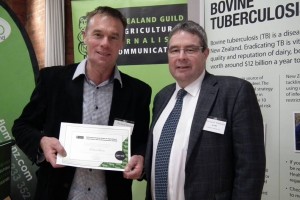 A brand new award recognising excellence in hard news reporting about any aspect of the beef and sheep industry has been won by Richard Rennie, for a portfolio of articles that appeared in the NZ Farmers Weekly.
A brand new award recognising excellence in hard news reporting about any aspect of the beef and sheep industry has been won by Richard Rennie, for a portfolio of articles that appeared in the NZ Farmers Weekly.
The award, sponsored by Beef + Lamb NZ Ltd, was added to the New Zealand Guild of Agricultural Journalist & Communicators’ annual awards, which were presented in Wellington last Friday evening.
In his articles, Rennie covered a series of issues affecting New Zealand beef and sheep farmers. One tackled the potential damage of fracking to Taranaki farmland – he discovered that not only was the practice not new, it had helped restore marginal coastal farmland into productive pastoral operations and stabilised coastal dune movement. Another covered a forced sale of Alec Campbell’s property after mortgagee action by Rabobank. It revealed the farmer’s claims about stock being within the with-holding period, after being treated with a long-acting drench, were well founded, raising justifiable concerns over food safety as a result of the actions. Transpower’s proposed pylons for a Western Bay of Plenty sheep and beef farm, and the ensuing battle, were the subject of the third item.
The supreme Rongo Award, recognising excellence in agricultural journalism, was won by Auckland-based freelance journalist, Benedict Collins, for a series of program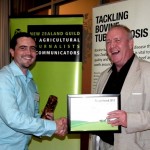 mes on the devastation of the kiwfruit industry by PSA-V, which appeared on Country99TV.
mes on the devastation of the kiwfruit industry by PSA-V, which appeared on Country99TV.
The runner-up was Shawn McAvinue, for articles that appeared in the Southland Times (though he is now working for the Otago Daily Times). This is the first year that TBfree New Zealand has sponsored this award.
At Friday night’s awards dinner, a total of ten awards were presented, nine for journalism and one for photography. The key objectives of the awards are the encouragement and recognition of excellence in agricultural journalism.
Another new sponsor, for an award that has been around for a number years, is Ballance Agri-Nutrients, which has funded the Farm Business Writing Award. The inaugural winner of this award was Tim Cronshaw, of The Press.
The PGG Wrightson Sustainable Land Management Award focuses on local, national and global agribusiness and environmental factors impacting on the sustainability of farm businesses, and was won by Susan Murray, of Radio New Zealand’s Country Life programme
The AgResearch Science Writers Award, established to enhance standards of science writing, especially about pastoral agriculture, was won by Tim Cronshaw of The Press.
The Horticulture New Zealand Journalism Award, set up to recognise excellence in agricultural journalism focusing on New Zealand’s horticulture industry, was won this year by Tim Fulton of New Zealand Farmers Weekly.
The Rural Women of New Zealand Award, which recognises the important contribution women make (and have always made) in the rural community, was won by Jackie Harrigan for articles which appeared in Country-Wide.
The AGMARDT Agribusiness Award, which recognises high quality information about and effective analysis of national, global and other agribusiness, was won by Hugh Stringleman, for articles which appeared in NZ Farmers Weekly.
The Federated Farmers Rural Photography Award, for a single photo that illustrates a rural event or activity was won by Taranaki Daily News photographer, Jonathan Cameron.
The Guild’s own award is designed to encourage and recognise excellence among journalists with three or less years reporting on agricultural issues, The Agricultural Journalism Encouragement Award, went to John Watson, of Country99TV.
Awaiting an SMS from Daisy
Everyone knows information technology holds great promise as an enabling technology in various fields. Well, mobile phones and text messaging may soon take on a whole new meaning for cattle farmers. Let’s just say farmers may soon start getting text messages from the cows in their herds, writes Gerry le Roux of Sciencelens.
According to a recent New York Times article, researchers in Switzerland are in the final testing stages of a device that implants sensors in cows to alert farmers when the cows are in heat. The electronic heat detector, which is implanted into the genitals, measures the cow’s body heat. This gets transmitted to a device around the cow’s neck which determines her motion activity. The results from the two measurements are combined using specially calibrated algorithms, with the correct combination of increased body heat and increased restlessness being an indicator that the cow is in heat. When this happens, an SMS is sent to the farmer’s phone, alerting him to the fact that the cow is sexually active.
The device, which is expected to be brought to market in Switzerland in early 2013, is the brainchild of several academic researchers at a technical college near the Swiss capital Bern. It is claimed that the device can play an important role in breeding, particularly in the dairy industry, since dairy cows, which are placed under ever increasing stress to produce more milk, are showing less and less signs of heat. This makes it difficult for farmers to use visual inspection to know when to introduce the bull, or artificial insemination. The new system is claimed to have a recognition rate of about 90 percent.
The main drawback of the device, at least initially, will be cost, which is expected to be about US$1,400 per unit and some farmers are skeptical whether it will be worth the investment.
It will be interesting to keep an eye on this technology, to see to what extent it will be accepted in the industry and how this will affect the cost of the units.
Kiwis keeping an open mind on TPP
 The majority of Kiwis support the idea of a Trans Pacific Partnership (TPP), new research has found.
The majority of Kiwis support the idea of a Trans Pacific Partnership (TPP), new research has found.
Research commissioned by the NZUS council has found that 56.3 percent of New Zealanders surveyed support or strongly support the TPP, 13.4 percent oppose the negotiation, with 30.4 percent keeping an open mind.
“The research is an important contribution to the debate around free trade. It shows New Zealanders are preared to see where the TPP negotiation leads rather than give in to scare-mongering,” says NZUS Council executive director Stephen Jacobi.
The research found that just 60.5 percent believe New Zealand needs to do more to connect with global markets, with just 9.4 percent opposing such moves.
The next TPP negotiation round will take place in Auckland in December.
The research also found that a majority of Kiwis (64.4 percent) believe increased trade between new Zealand and the United States is a good idea. Only 12.1 percent are opposed to it.
“Freer trade will create more opportunities for exporters and more choice for consumers and ultimately more jobs for Kiwis. The TPP provides an opportunity to maximise these benefits TPP is a work in progress but it’s an important first step towards adopting a seamless economic space around the Asia-Pacific region,” says Jacobi.
The research was conducted by Buzz Research between 18-21 September 2012 with 1,018 respondents aged 18-64 in New Zealand. It has a margin of error of +/- 3.1.
No chance government will legislate to restrict meat capacity
Link
After the announcement the week before last of Alliance Group’s intention to close sheepmeat processing at its Mataura plant, Meat Workers Union representative Gary Davis called for the government to intervene. This was no doubt caused more by frustration over the loss of jobs than any realistic expectation that the government would interfere in a commercial situation.
Industry commentator Allan Barber argues at his blog that there is no chance government will legislate to restrict meat capacity.
Sir Richard Hadlee lays down Movember challenge
One of our most recognisable Mo’s in New Zealand has adorned the respected upper lip of Sir Richard John Hadlee MBE since his tour to Pakistan in 1976. The former New Zealand cricketer, who’s regarded as one of the greatest fast bowlers and all-rounders in cricketing history (and top bloke) has laid down the challenge to all Mo Bros to get involved with the campaign ahead and spread the hairy word! Watch his Mo-message below.
You can find our more about Movember and register here.
Season just ended could produce messy results, says Barber
 The season just ended could produce messy results, according to meat industry commentator Allan Barber.
The season just ended could produce messy results, according to meat industry commentator Allan Barber.
The two largest processors and exporters, Silver Fern Farms and Alliance, have captured the headlines in the last couple of weeks.
Hot on the heels of its announced intention to close its sheepmeat chain at Mataura, Alliance has come out with an offer to suppliers of $20 in November per lamb contracted before the end of October.
From the other cooperative camp Keith Cooper, chief executive of Silver Fern Farms, last week sent an email out to suppliers which highlighted the disappointing financial result for the year ended 30 September because of the exchange rate and declining sheepmeat values in January and February not being reflected in procurement prices.
The final results will be declared in about two months when the market will be able to see just how disappointing the performance of the two companies actually was. Rumours of multi-million dollar losses have been prevalent, but rumour is just what they are until we see the actual figures. There is no doubt the problem has been almost entirely with sheepmeat in spite of the exchange rate, because exporters have been far more successful at reining in beef procurement costs.
It doesn’t take an Einstein to work out that the shortage of lambs for Mataura and the procurement competition are just two aspects of the same problem. The lowest national lamb kill for 51 years at 18.6 million, 15 percent down on the five year average will have made it very difficult for any company to get sufficient capacity utilisation to come close to making a profit. With Alliance’s largest sheep plant outside Invercargill, Mataura just over 50 km up the road was always under threat from declining volumes.
Blue Sky Meats, which balances in March, presaged the 2011/12 season’s problems in its declared annual result – a pre-tax loss of $604,000 and no dividend paid. The company termed this the most disappointing result in its history and drew attention to the excessive prices paid for stock through the turn of the year, both because of the high dollar and the drought in Southland.
It will be interesting to see how successful Alliance will be in securing committed lambs from suppliers stimulated by the $20 cash advance. Keith Cooper’s reaction was to say Silver Fern Farms had tried it six years ago with no success because some suppliers were affronted by the implication they were short of cash and didn’t want to close out their slaughter options. He prefers to rely on the company’s suite of supply plans rather than to repeat the cash in advance offer.
In his email to suppliers, Cooper sounds quite bullish about the new season’s prospects with a ‘fully configured operating platform’ and some exciting new marketing initiatives, even being bold enough to state that realistic livestock values are being established. If that is the case, it will either be because there’s enough livestock around to satisfy all processors or he is confident Silver Fern Farm’s overhead structure is competitive enough to guarantee filling their requirements.
Either way that is a big call in spite of the gains Silver Fern Farms has made in recent years, notably the closure of the Belfast sheep chain, improvements to its Finegand sheep processing and the rebuild of Te Aroha in the heart of the dairy farming Waikato/Bay of Plenty region. There are expected to be another 1.5 million lambs, but not enough to change processing dynamics much, while the market is another factor.
The meat industry is unique in that it has to compete at both ends of its supply chain. While livestock procurement has the most obvious impact on company profitability, demand from the market is also critical. Last season’s disappointments and losses have been as much about carrying too much inventory which the market couldn’t digest as the cost of the livestock to produce it.
When companies fail to manage both ends of the chain properly, things get messy. Just how messy they were last season will become clearer at the beginning of December when Alliance and Silver Fern Farms publish their results.
One man and his dogs
 The work of one man over the last four decades has contributed to the eradication of one significant disease and the control and reduction in incidence of another meat quality issue, earning him the respect of his meat industry colleagues.
The work of one man over the last four decades has contributed to the eradication of one significant disease and the control and reduction in incidence of another meat quality issue, earning him the respect of his meat industry colleagues.
Geoff Neilson, sheep farmer and chairman of Ovis Management Ltd (OML), has retired after a role spanning 41 years.
Starting in 1971, when he was elected to the Hydatids Council, Geoff contributed not only to the enhancement of sheep meat quality but also to the eradication in New Zealand of hydatids, which caused significant numbers of deaths and hospital admissions in New Zealand.
With the disbandment of the Hydatids Council in the early 1990s, there then became a need for the sheep industry to focus on another parasite Cysticercus Ovis, also known as ‘sheep measles’. The condition was not a human health issue, but was a meat quality issue that had the potential to erode market share and income for farmers and meat companies.
Geoff was the inaugural and only chair of OML until his retirement at the OML AGM on 28 August. OML was established by, and is funded by, sheepmeat processors through the Meat Industry Association (MIA).
MIA chairman, Bill Falconer, paid a formal tribute to Geoff’s lifetime commitment to the meat industry at the recent Red Meat Sector conference in Queenstown.
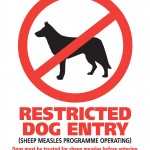 The OML board has elected a new chairman, Roger Barton, a sheep and beef farmer from Greytown in the Wairarapa.
The OML board has elected a new chairman, Roger Barton, a sheep and beef farmer from Greytown in the Wairarapa.
This article has appeared in Food NZ magazine (October/November 2012).
‘Meating’ the plastic challenge
 A series of challenges has been thrown out to the plastics industry to develop packaging that will help the meat industry maintain high food safety standards, increase shelf-life and develop new products.
A series of challenges has been thrown out to the plastics industry to develop packaging that will help the meat industry maintain high food safety standards, increase shelf-life and develop new products.
The meat industry is one of this country’s biggest users of plastic, particularly in the form of packaging that keeps products safe, fresh and looking great right to through to the customer.
Speaking to the Plastics New Zealand conference in Queenstown in May, Meat Industry Association chief executive Tim Ritchie outlined where he thought future opportunities lay for the material.
He told delegates that the meat industry has been very responsive to market demands and there has been a very significant change in the business model over the last 25 to 30 years. Trade has moved from sending frozen carcases – which, early on, were simply stockingetted and later shrink-wrapped for shipping – to the UK, to now sending chilled and frozen cuts and ready-prepared products to more than 115 markets around the world, with a growing focus on the Asian region, he explained.
“Now, we are in the business of directly servicing supermarkets with quality, consumer-ready cuts of meat, produced and packaged at source in New Zealand.
The industry is now in the ‘disassembly’ process, exporting and marketing the ‘bits’ around the world so as to maximise value, he said, adding that “a steadily increasing proportion of trade is high value chilled product.”
Ritchie said that plastics are widely used in the production process, covering products such as clips, liners, covers, containers, crates and pallets, “ensuring that processes are as clean as possible while meeting the needs of industrial production for items that are lightweight and resilient.”
There is a need to ensure their biodegradability and detectability. “But the greatest opportunities for the future of plastics in the meat industry are probably in packaging,” he said.
Areas of opportunity lie in safety, shelf-life, environmental sustainability and, finally, product quality and presentation. Reducing costs and lifting efficiencies are also part of the equation.
A growing volume of New Zealand meat is chilled and it is vacuum-packaged and sometimes CO2-gas flushed. “The use of barrier bags and gas flushing were important steps in the evolution of our business.”
New packaging that contains anti-bacterial agents, such as ‘biophages’, and ‘smart packaging’ which can identify changes in the product and alert consumers if there is a problem, are two new areas where manufacturers can assist the meat industry to maintain high food safety standards, according to Ritchie.
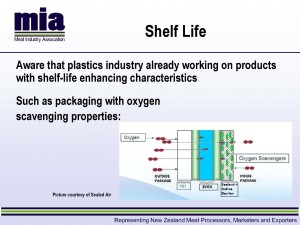 Shelf-life is another area which has become even more important especially for the perishable chilled meat trade, as the global shipping industry moves towards greater use of ‘slow-steaming’, which increases transit times and reduces the remaining shelf life of products once they get to market. He noted that packaging companies already working on solutions with shelf-life enhancing properties.
Shelf-life is another area which has become even more important especially for the perishable chilled meat trade, as the global shipping industry moves towards greater use of ‘slow-steaming’, which increases transit times and reduces the remaining shelf life of products once they get to market. He noted that packaging companies already working on solutions with shelf-life enhancing properties.
In addition, consumers are increasingly demanding environmental sustainability, which means reduced and/or recyclable packaging. Food waste, identified as a major problem especially by the European Union, is also an issue.
“But a significant amount also occurs after purchase and here packaging can be part of the problem,” Ritchie says. Packaging sizes for single or fewer portions, for example, or re-sealable and compartmentalised packages can help limit unnecessary waste.
“And then there are bio-plastics, such as those being made from meat by-products.”
It is not just being satisfied ourselves that all is sustainable and safe, said Ritchie. “We need to be able to demonstrate it to the consumer and retailer, who is often proxy for the consumer in this business.
“Plastics can play an increasing role in helping with food safety, extending product shelf-life, improving attractiveness and ease-of-use by consumers. At the same time, our industry increasingly needs products that are environmentally sustainable, with recyclable or biodegradable attributes,” he concluded.
“And of course, anything your industry can do to help us take cost out of the system and improve operational efficiency will be welcomed.”
This article has appeared in Food New Zealand magazine (October/November 2012).

